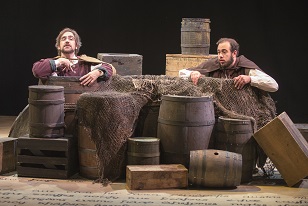
Word of the Day: Recondite
Paul Schleifer
According to the Merriam-Webster Dictionary, recondite means “1: difficult or impossible for one of ordinary understanding or knowledge to comprehend; 2 : of, relating to, or dealing with something little known or obscure; 3 : hidden from sight : concealed” (https://www.merriam-webster.com/dictionary/recondite). Merriam-Webster gives this background on the adjective: “It dates to the early 1600s, when it was coined from the synonymous Latin word reconditus. Recondite is one of those underused but useful words that’s always a boon to one’s vocabulary, but take off the re- and you get something very obscure: condite is an obsolete verb meaning both ‘to pickle or preserve’ and ‘to embalm.’ If we add the prefix in- to condite we get incondite, which means ‘badly put together,’ as in ‘incondite prose.’ All three words have Latin condere at their root; that verb is translated variously as ‘to put or bring together,’ ‘to put up, store,’ and ‘to conceal.’”
www.etymonline.com says that it comes into the language in the 1640s from the Latin but through the French recondit. Of reconditus, it says further that it is the “past participle of recondere ‘store away, hide, conceal, put back again, put up again, lay up,’ from assimilated form of com- ‘together’ (see com-) + -dere ‘put,’ from PIE root *dhe- ‘to set, put, place.’”
It’s the 11th of April, and on this date 51 years ago, Tom Stoppard’s Rosencrantz and Guildenstern Are Dead premiered at the Old Vic in London, “with John Stride as Rosencrantz, Edward Petherbridge as Guildenstern, Graham Crowden as the Player, and John McEnery as Hamlet” (https://en.wikipedia.org/wiki/Rosencrantz_and_Guildenstern_Are_Dead).
Here is how the play is described on the Samuel French, Inc., webpage: “Acclaimed as a modern dramatic masterpiece, Rosencrantz & Guildenstern Are Dead is the fabulously inventive tale of Hamlet as told from the worm’s-eye view of the bewildered Rosencrantz and Guildenstern, two minor characters in Shakespeare’s play. In Tom Stoppard’s best-known work, this Shakespearean Laurel and Hardy finally get a chance to take the lead role, but do so in a world where echoes of Waiting for Godot resound, where reality and illusion intermix, and where fate leads our two heroes to a tragic but inevitable end.” Indeed, one might describe the play as Hamlet meets Waiting for Godot.
Stoppard is a brilliant and funny playwright. He was born in Moravia in Czechoslovakia, but his family fled the Nazis, and he ended up in Great Britain. He once described himself as a language nerd, and his plays are witty and inventive. R&G was his first big success and is still arguably his best play. Among my favorites are The Real Inspector Hound, The 15-minute Hamlet, Jumpers, Travesties, and Arcadia. He was also the co-writer of Shakespeare in Love.
My introduction to R&G came in 1974. I was a freshman at Davidson. I had auditioned for the Fall production, A Servant of Two Masters by Goldoni, a really fun comedy in the style of commedia dell’arte, but I had not been cast in any role despite having given, I thought, a pretty good audition. It did not occur to me, the incredibly dense 17 year old that I was, that I couldn’t really be in a play and play soccer, with its road trips, at the same time.
When the winter quarter started (the quarter system was 3 10-week terms during the regular year and a slightly shorter term in the summer), I was walking across campus when I ran into my Theater Appreciation teacher (I’d taken the class in the fall), Dr. Joe Gardner. He stopped me and asked me if I were planning to audition for the winter production. I said that I hadn’t thought about it. He asked me to consider doing so, and told me that I could find a copy of the play, Rosencrantz and Guildenstern Are Dead, on reserve in the library. He said, “If you read it and still aren’t interested, that’s fine. But I think you’ll like it.”
I found myself sitting in the comfy chairs in the library, which were right inside the main doors, laughing out loud. I’m sure people were wondering what I was on, but the truth was I was on language, really clever, sparkling, funny language. So I auditioned, and Dr. Gardner gave me the role of Rosencrantz. It was a great experience, and I ended up majoring in theater (sort of), with Dr. Gardner as my major professor.
Plays like Rosencrantz and Guildenstern Are Dead are not well known to the general public, but they should not be considered recondite either. If you ever see a production advertised where you can catch it, do so. Even if it’s only a so-so production, the play is so good you’ll still enjoy it. Oh, but the movie version (1990) is less than so-so.
The image is from the University of Utah Department of Theater: “Mark Fossen as Rosencrantz and Mark Macey as Guildenstern in ROSENCRANTZ AND GUILDENSTERN ARE DEAD by Tom Stoppard. Directed by Jerry Rapier. Studio 115. Photo by Spencer Sandstrom.” The scene is in the third act (it’s a 3-act play), where Rosencrantz and Guildenstern find themselves on a boat, headed toward England.